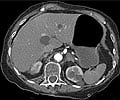A new study shows that smoking patients who participated in one hypnotherapy session were more likely to be nonsmokers at 6 months compared with patients using nicotine replacement therapy.
A new study presented at CHEST 2007, the 73rd annual international scientific assembly of the American College of Chest Physicians (ACCP), shows that smoking patients who participated in one hypnotherapy session were more likely to be nonsmokers at 6 months compared with patients using nicotine replacement therapy (NRT) alone or patients who quit “cold turkey”. The study also shows that patients admitted to the hospital with a cardiac diagnosis are three times more likely to quit smoking at 6 months than patients admitted with a pulmonary diagnosis.
“Our results showed that hypnotherapy resulted in higher quit rates compared with NRT alone,” said Faysal Hasan, MD, FCCP, North Shore Medical Center, Salem, MA. “Hypnotherapy appears to be quite effective and a good modality to incorporate into a smoking cessation program after hospital discharge.”Dr. Hasan and colleagues from North Shore Medical Center and Massachusetts General Hospital compared the quit rates of 67 smoking patients hospitalized with a cardiopulmonary diagnosis. All patients were approached about smoking cessation and all included in the study were patients who expressed a desire to quit smoking. At discharge, patients were divided into four groups based on their preferred method of smoking cessation treatment: hypnotherapy (n=14), NRT (n=19), NRT and hypnotherapy (n=18), and a group of controls who preferred to quit “cold turkey” (n=16). All patients received self-help brochures. The control group received brief counseling, but other groups received intensive counseling, free supply of NRT and/or a free hypnotherapy session within 7 days of discharge, as well as follow up telephone calls at 1, 2, 4, 8, 12, and 26 weeks after discharge. Patients receiving hypnotherapy also were taught to do self-hypnosis and were given tapes to play at the end of the session.
At 26 weeks after discharge, 50 percent of patients treated with hypnotherapy alone were nonsmokers, compared with 50 percent in the NRT/hypnotherapy group, 25 percent in the control group, and 15.78 percent in the NRT group. Patients admitted with a cardiac diagnosis were more likely to quit smoking at 26 weeks (45.5 percent) than patients admitted with a pulmonary diagnosis (15.63 percent).
“Patients admitted with coronary symptoms may have experienced ‘fear and doom’ and decided to alter a major health risk to their disease when approached about smoking cessation,” said Dr. Hasan. “In contrast, pulmonary patients admitted for another exacerbation may not have felt the same threat. They likely felt they can live for another day and continue the smoking habit.”
The researchers note that hospitalization is an important opportunity to intervene among patients who smoke.
“Doctors and other health personnel should use this occasion to firmly recommend smoking cessation and emphasize the impact of smoking on their disease process and hospital admission,” said Dr. Hasan. “Pulmonologists, in particular, should make a stronger case and more passionate message to their patients, and efforts should be coordinated with counseling.”
Source-Eurekalert
GAN/C











